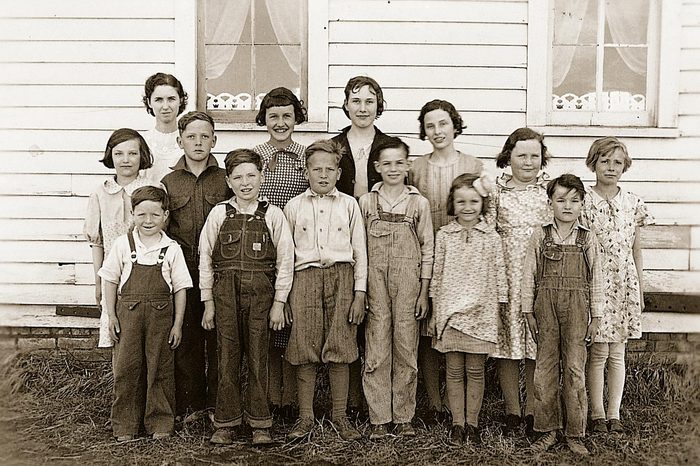
Short is better
Wilma Godsey (front row, second from right), then known as Wilma Jean Rickabaugh, wished for a shorter name in first grade. She’s shown with her schoolmates in 1936.
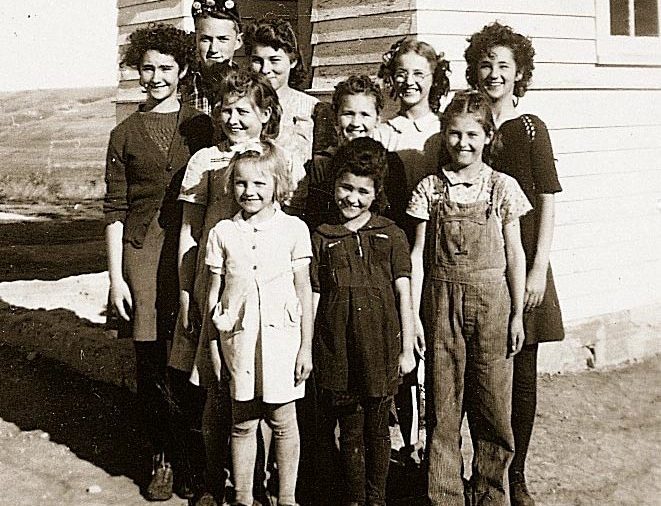
Rural school
Faye Bertram (front, left) attended Turtle Butte High School in rural South Dakota in the 1940s. Also, check out these photos of what school was like 100 years ago.
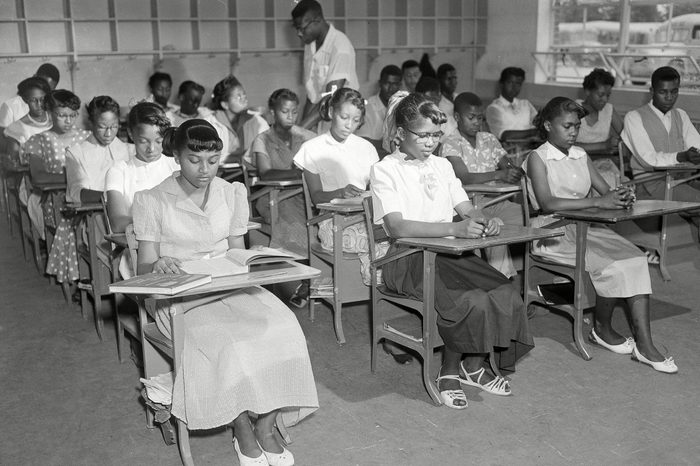
New classroom
A group of students was photographed in their newly built school in Summerton, South Carolina.
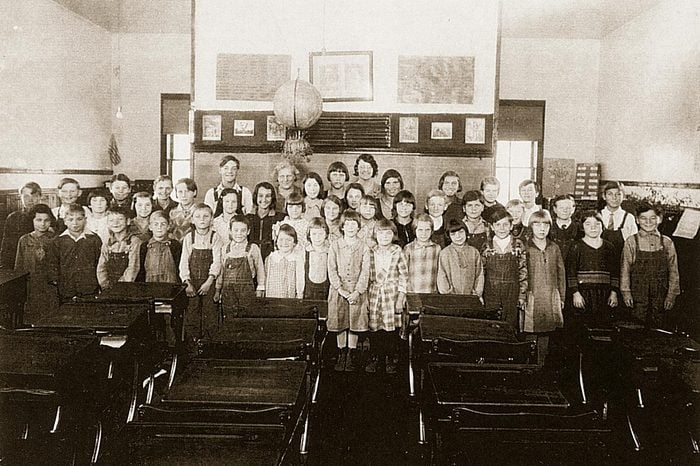
Bands and dancing
This Wisconsin school had 47 pupils in 1929. Students participated in unique activities like forming a harmonica band and square dancing at the county fair.
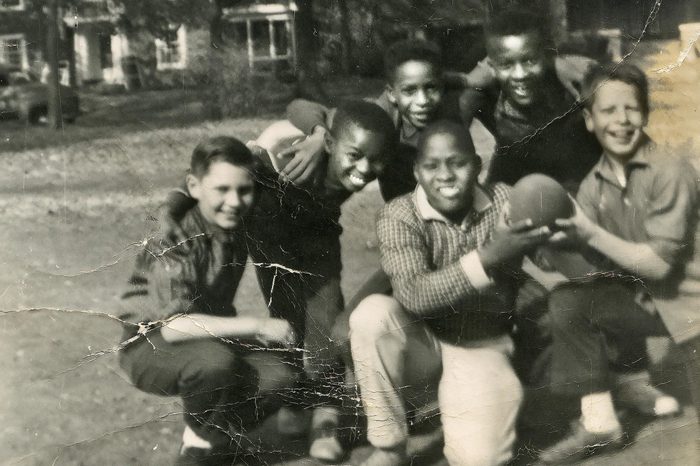
American kids
“We were all-American kids, in sixth grade at Stanley Hall High School in Evansville, Indiana, in 1963,” says Rev. David M. Poland.
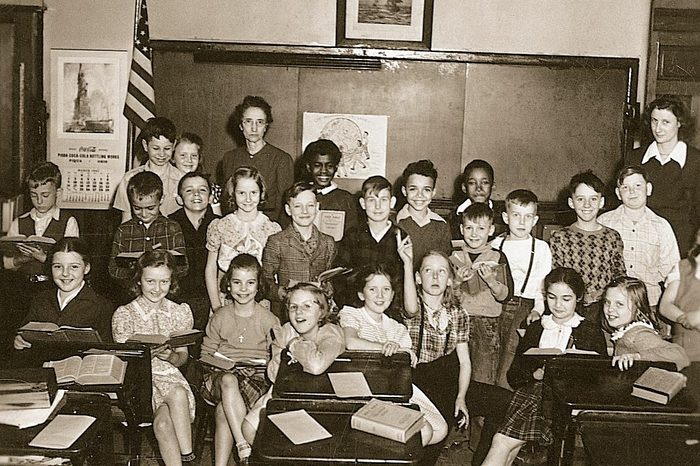
Edwards School
Brenda Boldman and her classmates attended Edwards School in Troy, Ohio, in the 1940s.
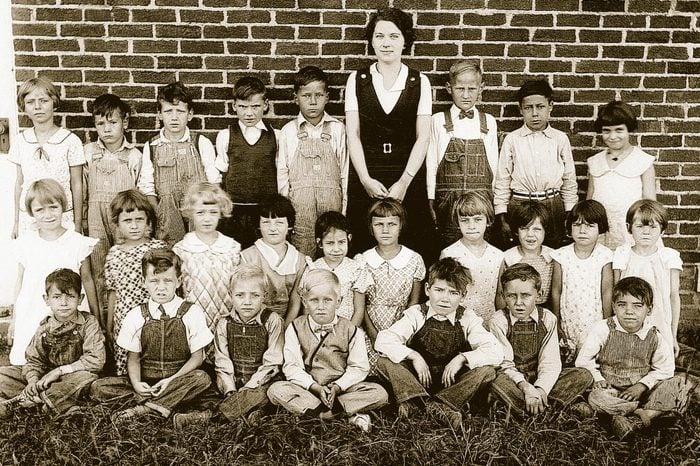
Dressed up in overalls
“We all wore our best clothes for this school picture taken in 1934 at the Bartlett Consolidated School in Bartlett, Iowa,” says Keith Eyler (first row, third from left). “Overalls were the clothing of choice. While they fit all right, school shoes were always two sizes too big so our feet could grow into them.”
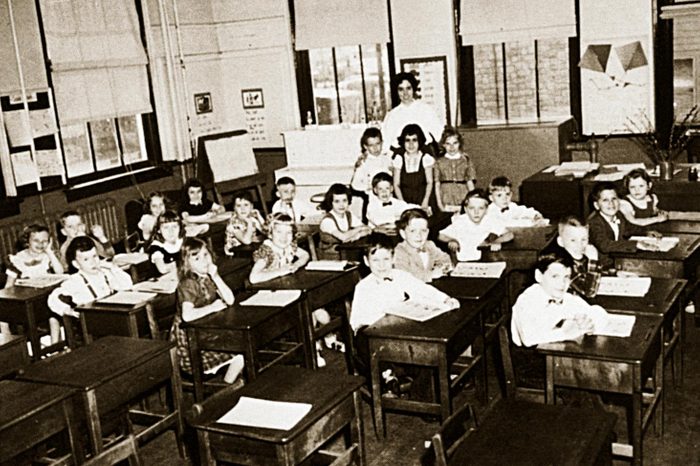
Princess teacher
When Phil Feinberg started first grade in 1953 in Hamilton Township, New Jersey, there were too many children in his classroom. He was offered a chance to transfer to Mrs. Albert’s class and he readily agreed because he thought she looked like Snow White.
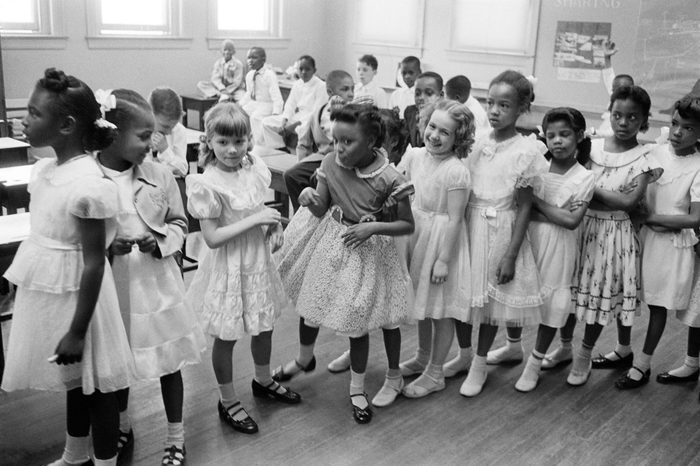
Barnard School
In 1955, a classroom of integrated students in Washington D.C. gathers for a picture. You won’t find these 18 things in schools anymore. Do you recognize any of them?
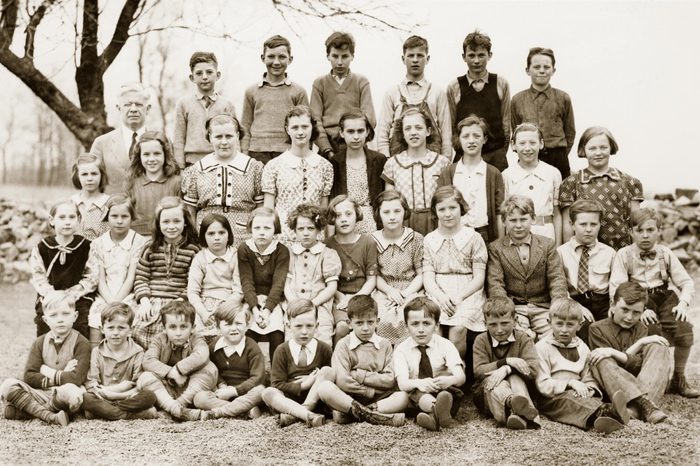
Kind teacher
In the 1930s, Albert Schantz (back row, far right) had a caring teacher, Charles Berger, whose kindness and teaching skills are still remembered.
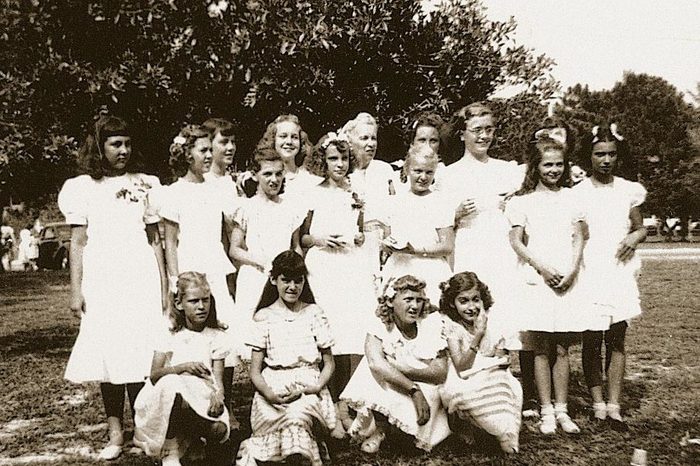
Catching up after moves
Despite wartime moves, one teacher worked hard to help Ruth Davis (front row, second from right) and other students bring their education up to date in St. Petersburg, Florida, during the early 1940s.
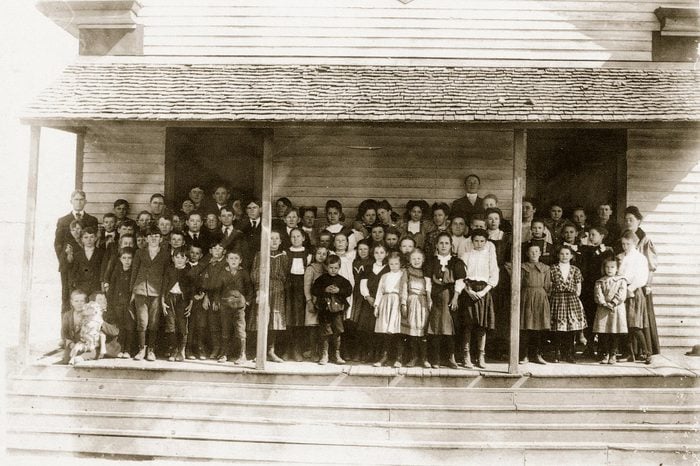
Happy memories
Bertha Whetstone attended the three-room Flea Hop School in Flea Hop, Alabama. This school picture is from the 1890s, long before Bertha was born.

Trains
In 1929, William Loechel was interested in trains while attending kindergarten in Baltimore, Maryland, so his teacher, Miss Cronin, helped him make one.
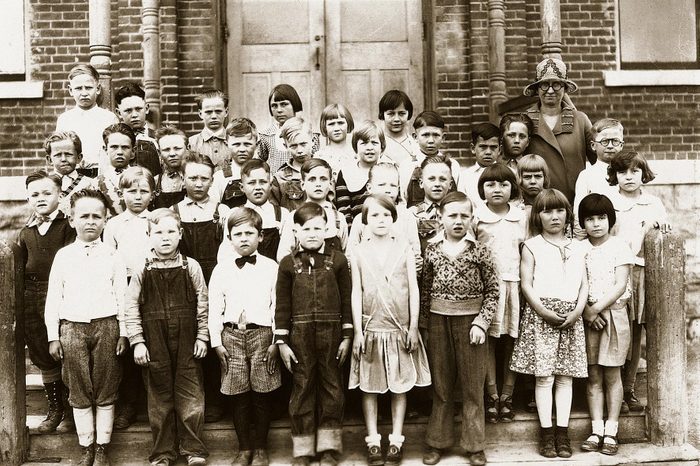
Making butter
“I liked my second-grade teacher in Shelton, Nebraska, because she always had us do unusual things,” says Bob Masse, now of Alhambra, California. “Once she brought in a pint jar of cream from the farm and had each of us shake the jar until the cream turned to butter. Then she buttered soda crackers so each of us could have a taste.”
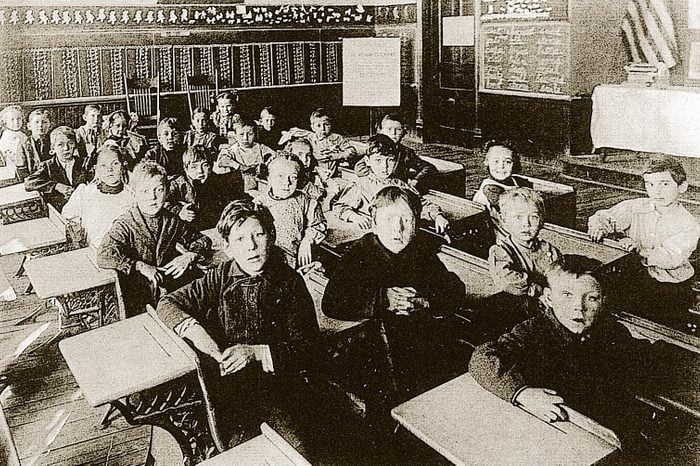
Home for recess
When his teacher, Miss Cantey, dismissed the class for recess on the first day of school in 1910, Verne Phillips misunderstood and headed home, which was only a block away. His mother laughed and sent him back to school.
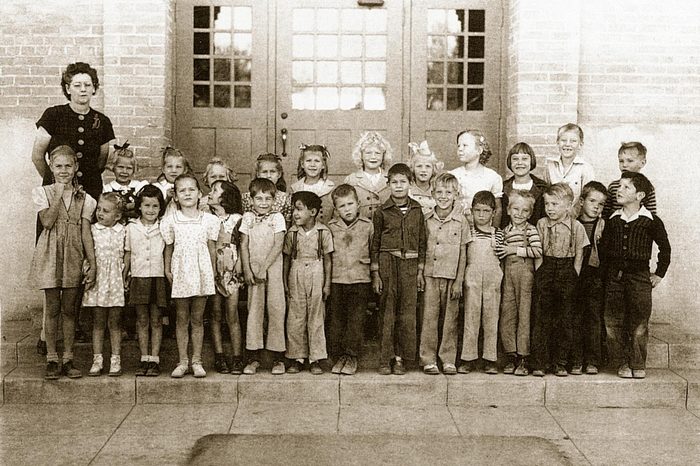
Smile for the camera
In September 1945, Doris Christensen was excited about going to school—until she got there. In this first-grade picture in Safford, Arizona, she’s in the back row, third from the right.
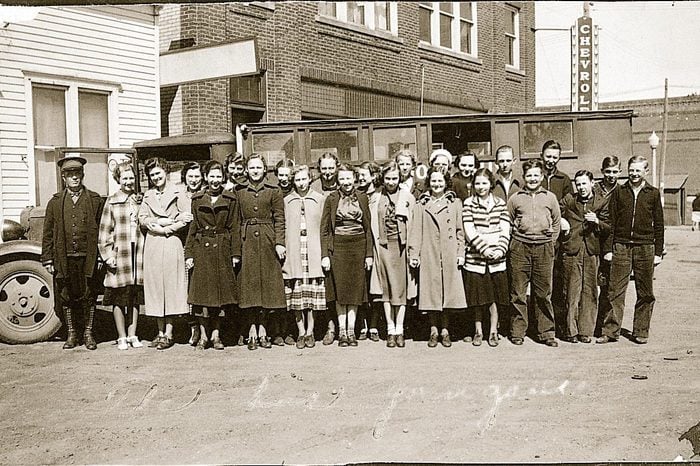
Farm kids
From 1937 to 1939, Casey Phelps’ school bus picked up farm kids in Badger, South Dakota, and took them to Arlington High School. Casey, a World War I veteran, was the bus owner and driver.
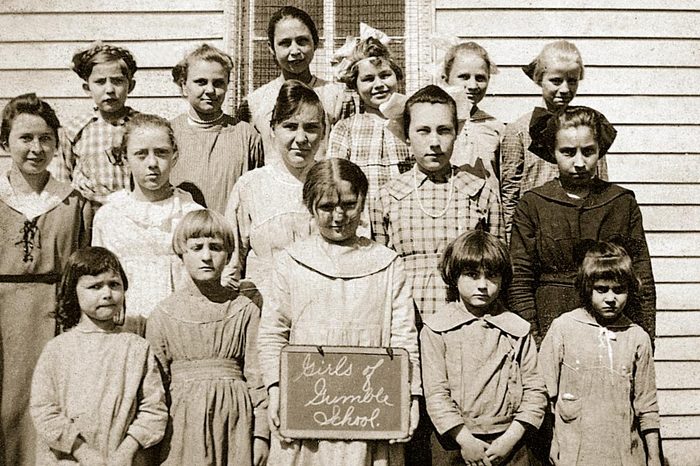
Country school
“I vividly remember being a seven-year-old attending the country school about a mile from our farm in the tiny rural town of Passport in southern Illinois,” says Evelyn Cochran. She attended the school from 1915 to 1923. In this third-grade picture, Evelyn is in the back row, third from right.
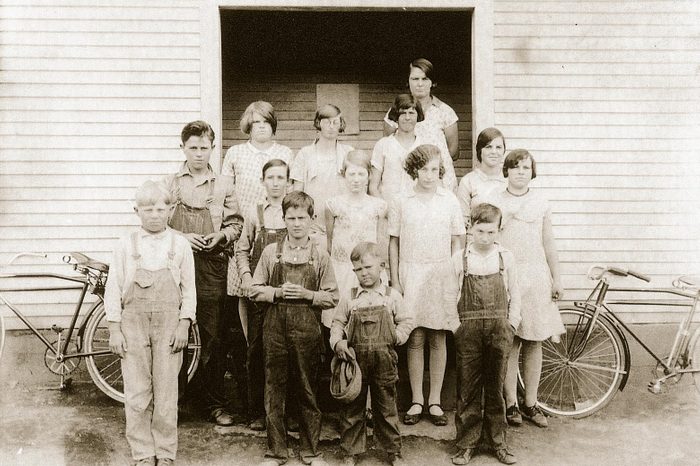
Trapping skunks
Homer Crouch (front row, second from left) made some spending money by trapping skunks on the way to school in the 1930s. He attended a one-room school in Oklahoma during the Depression years. You probably took these school subjects, but your kids won’t.
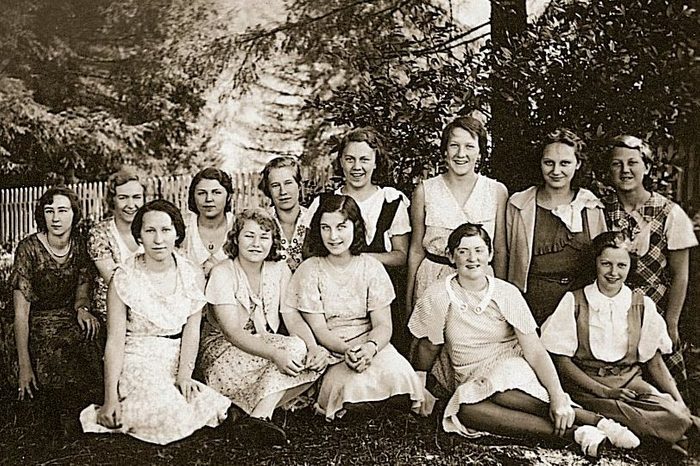
School by boat
Carol Smith (back row, second from left) got to school in Coos Bay, Oregon, by boat in 1933. Sometimes students jumped ship and raced to the next landing for fun. If they lost, it was a long walk home.
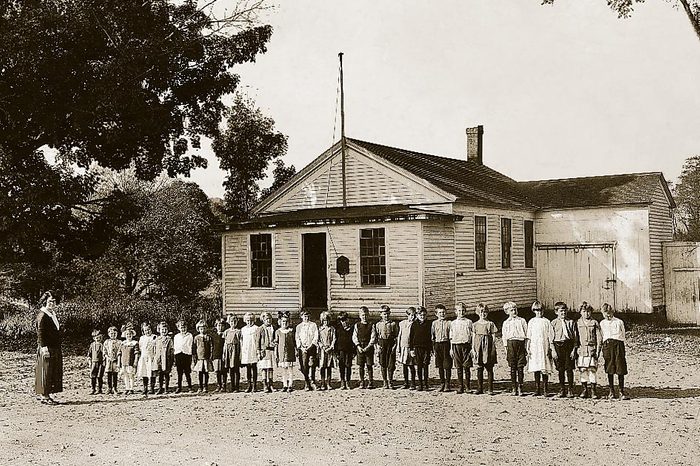
Eight grades, one school building
All eight grades were packed into the little school building in Bristol, Connecticut, in the 1920s.
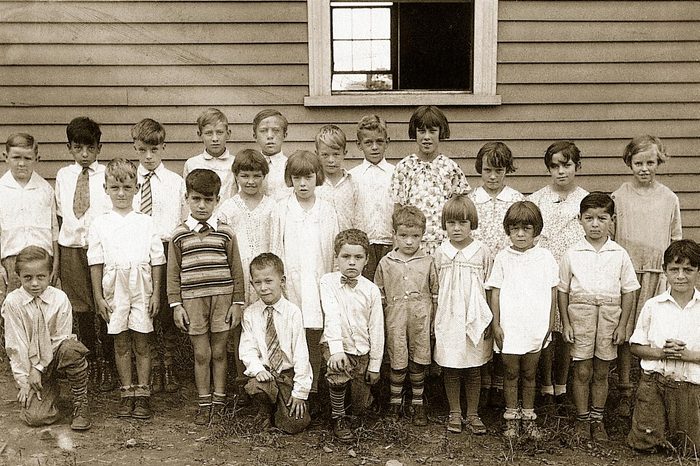
Little red schoolhouse
The little red schoolhouse still stands where Shirley Torrey Campbell (third from right in the back row) attended back in 1931. The school was in a section of Groveland, Massachusetts, called Saveryville.
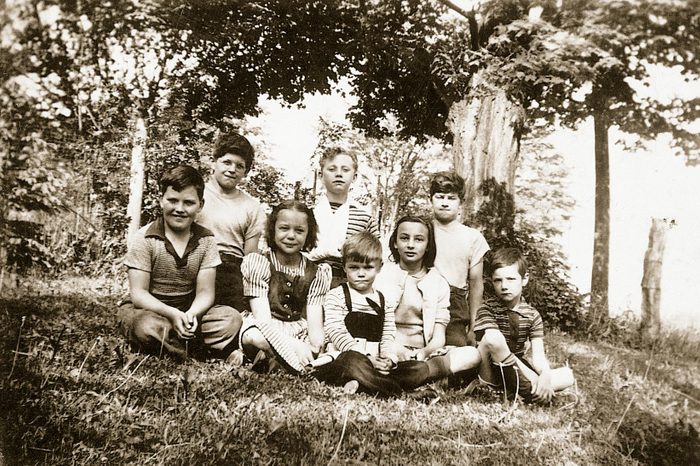
Octagon-shaped school
Back in the 1940s, when Rudy Gavurnik and seven other students attended school in an unusual octagon-shaped building in Skaneateles, New York, the joke was that when they all misbehaved at once, the teacher had a corner for each student to stand in.

Playing the flute
Back in 1954, all the students in Mrs. Brown’s third-grade class in Savage, Maryland, learned to play the flute.
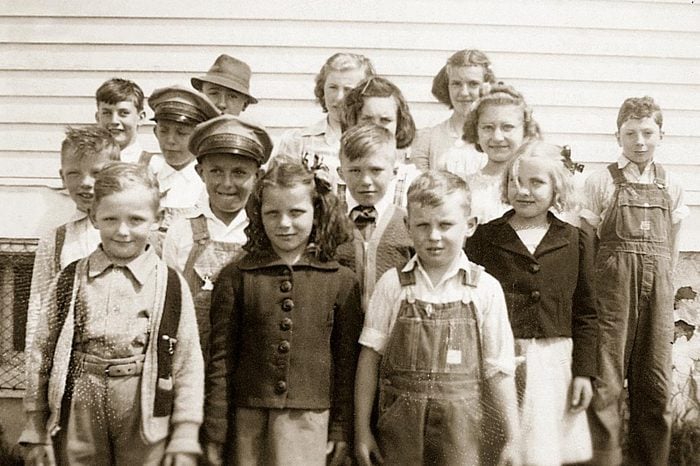
Good grades
As a new teacher, Marion Weekly got an excellent grade from her supervisor. This is a picture of her first class in 1942.
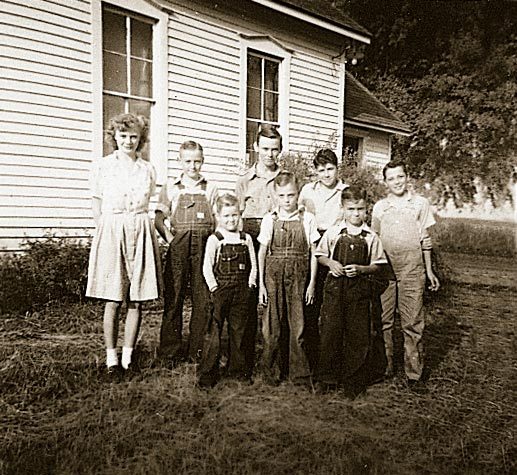
Teacher at recess
Teacher Marjorie Eitel was barely taller than her students in 1946 at the Banner School in Adair County, Missouri. She played games with them at recess. Check out these rare photos of what life was like in the 50s.
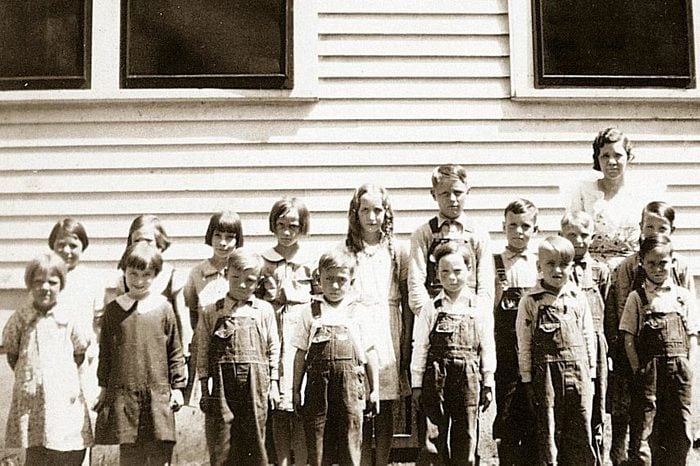
Young teacher
As an 18-year-old, Dorothy Rains took on the task of instructing 21 pupils, grades 1 through 8, in Merrick County, Nebraska in 1922. This photo was taken with her elementary school students in 1933.
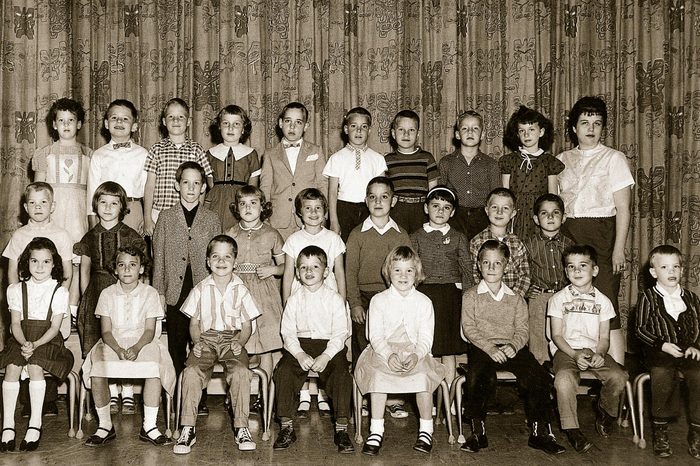
Fourth-generation teacher
As a fourth-generation teacher, Marilyn Byerley (back row, far right) thought she was well-prepared for her first day of teaching first grade in 1959 at Shoregate School in Willowick, Ohio. But a terrified child was not in her lesson plan.

No shoes
Terry Curtis (first row, third from left) has a typical red-haired freckle-faced grin in this class picture from 1951 in Jacksonville, Texas. He may be shoeless because he got his shoes wet during lunchtime work in the cafeteria.
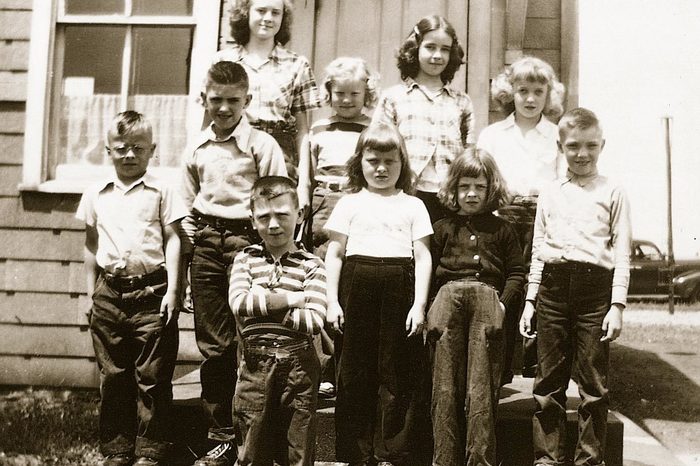
Woodbury School
Mary Caretto took good care of her first graders, including Judith Pfeifer, at Woodbury School in Grundy County, Illinois, during the 1940s.
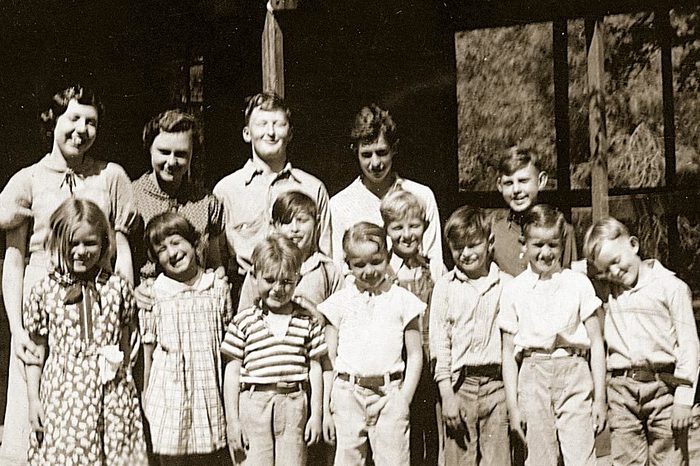
Mining community school
Haskel McInturf (front row, second from right) and his brother Leo (front row, center), are shown in this 1938 photo at Morris Ravine School, a one-room building in a small mining community north of Oroville, California.
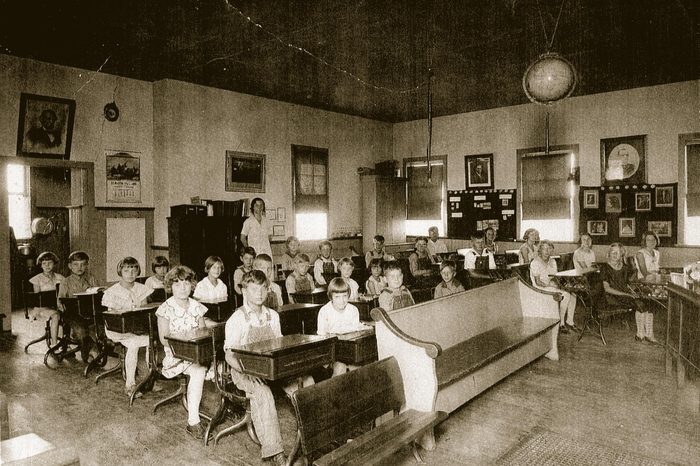
One-room school
Oliver Glanzman attended the Gilman Valley one-room country school in Gilmanton, Wisconsin, in 1932.
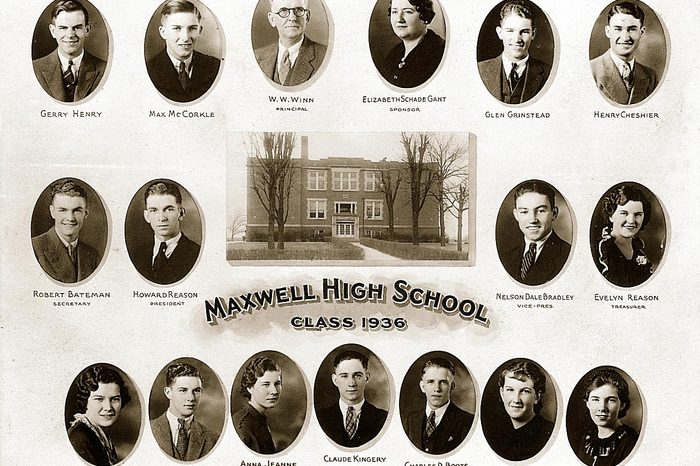
Apple blossoms for graduation
These 15 students graduated from Maxwell (Indiana) High School in 1936, with apple blossoms decorating the stage.
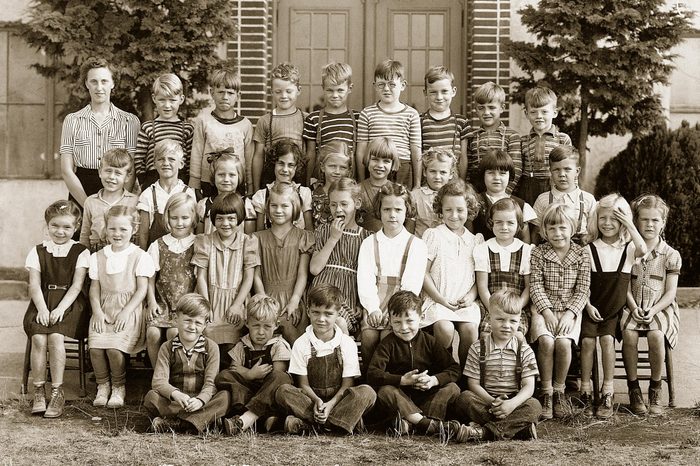
Supporting the war effort
In 1942 in Edmonds, Washington, first-graders and their families saved cooking fat, string, scrap metal, and even hair to support the war effort. Doris Pollack (second row, third from right) remembers bringing dimes to school to buy savings stamps that became bonds.
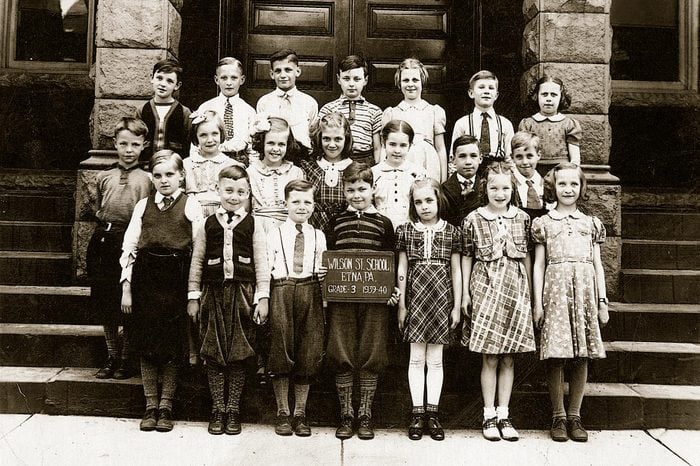
Wilson St. School
This photo from Wilson St. School in Etna, Pennsylvania, captured the 1939-40 third-grade class. Anna Mae Michalowski is in the front row, second from right.
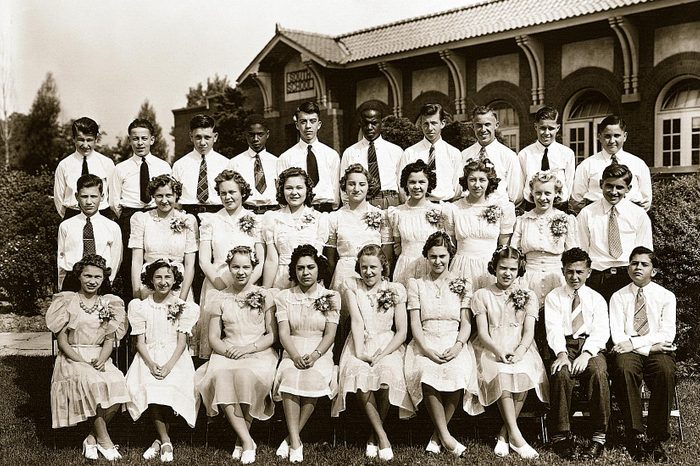
Going into politics
At least two members of this 1941 eighth-grade graduating class at South School in North Chicago, Illinois, went into politics, says Elaine (Manzke) Eagon. One served as a North Chicago alderman and another in the Illinois General Assembly.
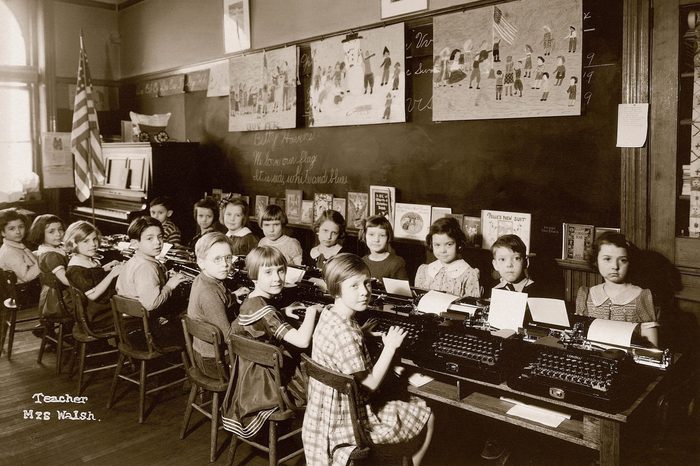
Myra Bradwell School
“This picture, taken in 1936, shows my second-grade class at Myra Bradwell School on the south side of Chicago,” says Marilyn Blake Vander Geest. “I’m fourth from the right in the back row.”
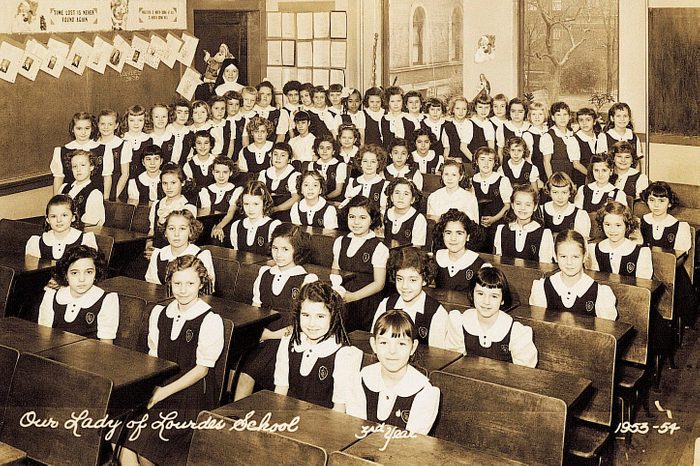
64 kids in class
“Sister Antonina was my teacher at Our Lady of Lourdes in Brooklyn, New York,” says Angela Beetz. “There were 64 kids in our class of 1953. The room was actually double the size of what you see here. I’m in the third row, second from right.”
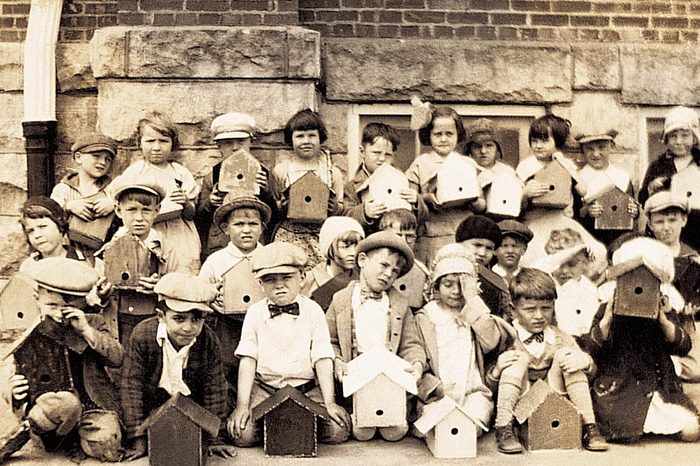
Birdhouses
“As a kindergartner at Franklin School in Wichita, Kansas, in 1930, we made birdhouses as a class project,” says June Kennedy. “I’m the girl in the front row with my hand on my face. The effects of the Depression were all around us, but we found simple ways to have fun.”
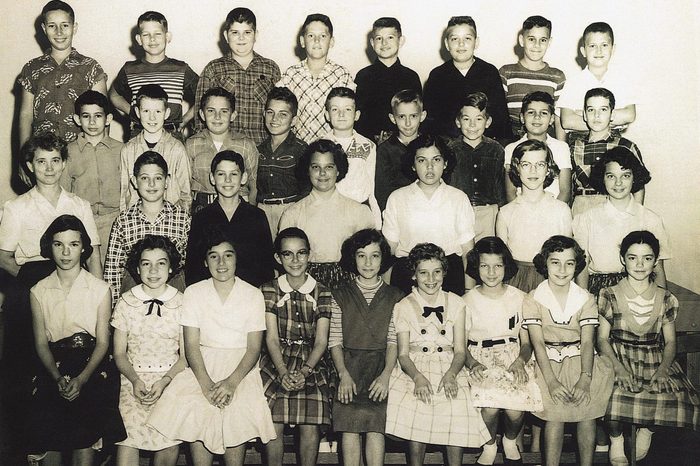
Band competition
“At our elementary school in Houma, Louisiana, students were assigned to classrooms alphabetically by last name,” says Herman Domangue. “The only exceptions were the members of the band. Only four bands received a ‘superior’ rating at competition, and we were one of them. This photo was taken in 1955.”
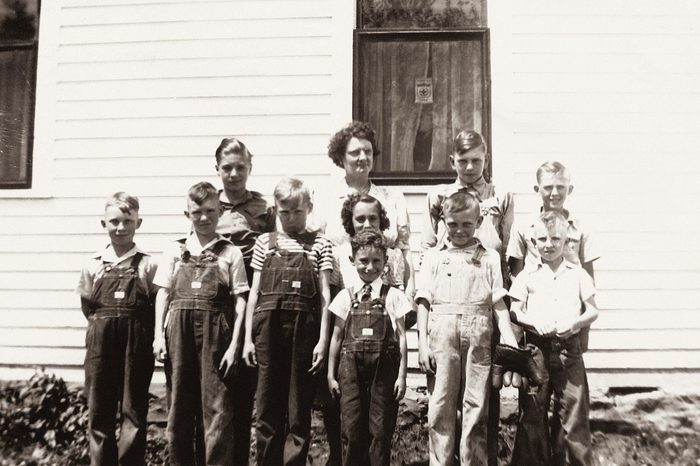
Collecting milkweed pods
“During World War II, country schools throughout Iowa collected milkweed pods so the silks could be used to make parachutes and life jackets,” says Edna Small. “In 1944, Otter Creek School was a runner up in the state for collecting 130 sacks of the pods. As the only girl in Mrs. Plumb’s class, I had to be a tomboy to keep up with the others!”